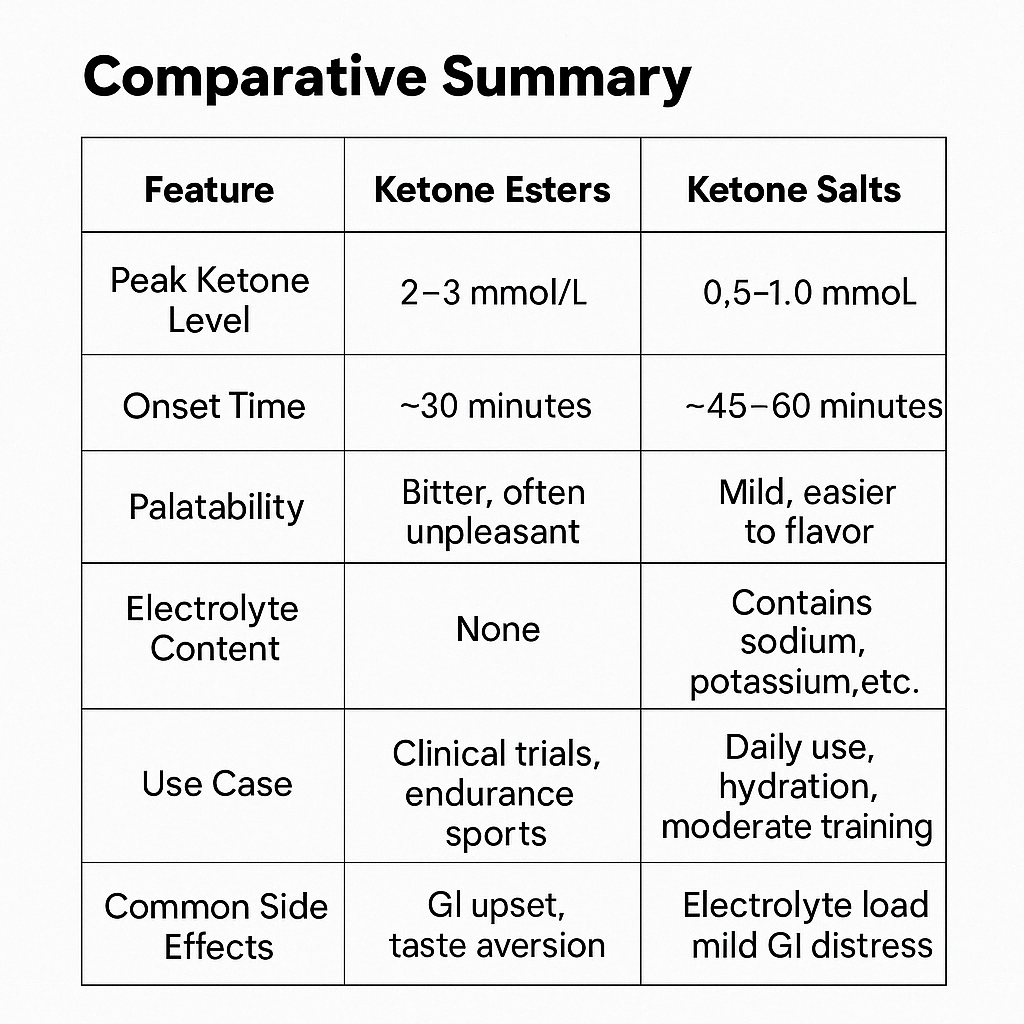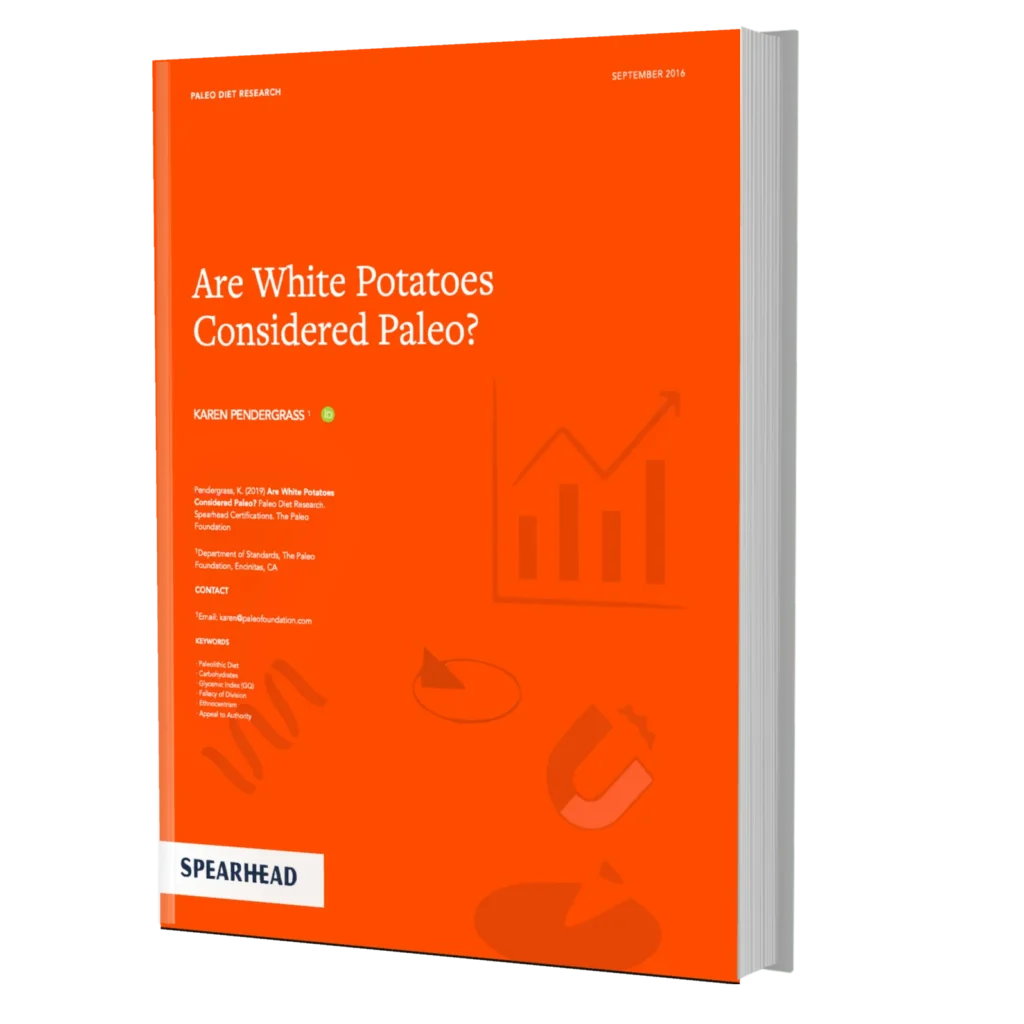Exogenous Ketones: Esters, Salts & Metabolic Health (Pt 3)
Exogenous Ketones: Esters, Salts & Metabolic Health Part 3
As interest in metabolic health continues to rise, exogenous ketones have emerged as a promising tool for enhancing energy, cognitive performance, and therapeutic support—without requiring dietary restriction. Ketone esters and ketone salts, the two primary forms of exogenous ketones, enable users to elevate blood ketone levels independently of carbohydrate intake, providing a direct route to nutritional ketosis. This article explores the science behind ketone supplementation, comparing the bioavailability and applications of esters versus salts. Drawing from peer-reviewed research, we examine the physiological roles of ketone bodies, their effects on brain and physical performance, and the safety profile of these supplements. Whether used for sports recovery, neuroprotection, or metabolic support, exogenous ketones represent a new frontier in functional nutrition.
Ketosis Without Fasting, Exogenous Ketones and Weight Loss, Ketone Metabolism, Nutritional Ketosis, Exogenous Ketone Safety, Ketone Bodies and Athletic Recovery, Ketone Supplements for Brain Health, Ketone Ester Bioavailability, Keto Supplements Explained, Ketones for Inflammation Reduction

Ketones are gaining renewed scientific attention for their roles in energy production, metabolic flexibility, and disease management. These molecules—specifically beta-hydroxybutyrate (BHB), acetoacetate (AcAc), and acetone—are typically produced by the liver during periods of low carbohydrate availability, such as fasting, prolonged exercise, or adherence to a ketogenic diet. This state of endogenous ketone production, or ketogenesis, enables the body to use fat-derived ketones as an efficient alternative fuel to glucose.
In recent years, the development of exogenous ketones has expanded the application of ketone metabolism beyond traditional ketogenic protocols. These externally sourced ketones, administered through ketone esters or ketone salts, provide a direct mechanism to elevate circulating ketone levels—without requiring fasting or carbohydrate restriction.
This innovation has catalyzed a surge in consumer interest and research. The global ketone supplement market, valued at $3.8 billion in 2021, is projected to grow steadily as both athletes and individuals managing chronic conditions seek performance and health benefits without restrictive diets. [1] From claims of improved endurance and mental clarity to applications in epilepsy, Alzheimer’s disease, and metabolic disorders, exogenous ketones are being explored across a wide range of therapeutic and lifestyle domains.
In this article, we provide a detailed examination of exogenous ketones, comparing the structure, bioavailability, and function of ketone esters and ketone salts. By integrating findings from peer-reviewed studies, we assess their potential advantages, limitations, and safety profiles—offering clarity on how and when these supplements may offer meaningful benefits in health and performance contexts.
Physiological Role of Ketones in Metabolism
Ketone bodies are central to the body’s adaptive response to carbohydrate scarcity, acting as efficient energy substrates when glucose availability is limited. Produced primarily in the liver through the process of ketogenesis, the three main ketone bodies—beta-hydroxybutyrate (BHB), acetoacetate (AcAc), and acetone—circulate through the bloodstream and supply energy to peripheral tissues, including the brain, heart, and skeletal muscles.
Under fasting or ketogenic conditions, fatty acids are oxidized to produce acetyl-CoA, which then enters hepatic mitochondria to generate ketone bodies. These molecules cross the blood-brain barrier and serve as an alternative to glucose, especially in energy-demanding organs like the brain. This shift not only conserves muscle protein but also enhances metabolic efficiency during prolonged exertion or caloric restriction. [2]
Recent findings published in Cell Metabolism (2023) highlight ketones’ role in maintaining mitochondrial integrity, reducing oxidative stress, and modulating key signaling pathways involved in cellular repair. [3] BHB, in particular, functions as a histone deacetylase (HDAC) inhibitor, influencing gene expression and promoting anti-inflammatory effects. [4]
Moreover, ketone metabolism contributes to enhanced cognitive resilience. A 2024 review in Frontiers in Immunology emphasized the role of ketones in modulating immune signaling and neuroinflammation, with downstream effects on neuronal stability and synaptic repair [5]. This positions ketones not merely as fuel, but as metabolic regulators capable of influencing brain health and systemic inflammation. From a physiological standpoint, ketones are a powerful tool in metabolic adaptation. Their endogenous production during periods of stress is a survival mechanism that conserves glucose for essential functions while providing a stable energy source across various tissues. The exogenous delivery of ketones seeks to replicate these benefits in individuals who may not follow a ketogenic diet, extending the reach of ketosis into therapeutic and performance-enhancing contexts [6].
Ketone Esters vs. Ketone Salts: Structure, Function, and Bioavailability
Exogenous ketones are most commonly delivered in two forms—ketone esters and ketone salts—each with distinct chemical structures, absorption kinetics, and practical applications. While both aim to raise circulating ketone levels and simulate a state of nutritional ketosis, their performance and tolerability differ markedly.
Ketone Esters
Ketone esters are compounds in which a ketone body—typically beta-hydroxybutyrate (BHB)—is chemically bonded to an alcohol such as 1,3-butanediol. Upon ingestion, ester bonds are hydrolyzed in the gut and liver, rapidly releasing free BHB into the bloodstream. This leads to a sharp rise in plasma ketone concentrations, often reaching 3–5 mmol/L within 30–60 minutes [7].
Due to this rapid absorption and high bioavailability, ketone esters are considered the most efficient form of exogenous ketones. They are commonly used in clinical research and performance contexts, where achieving a fast and sustained elevation in blood ketones is desirable. However, their strong taste and potential for gastrointestinal discomfort can limit consumer adoption [8].
Ketone Salts
Ketone salts, in contrast, are formed by binding beta-hydroxybutyrate (BHB) to mineral ions such as sodium, potassium, calcium, or magnesium. These salts are generally more palatable than ketone esters and are easier to incorporate into commercial formats like powders, capsules, and ready-to-drink beverages—making them a popular option for broad consumer use.
While ketone salts can increase circulating BHB levels, the effects are comparatively modest—typically peaking around 0.5 to 1.0 mmol/L—due to slower absorption rates and lower overall bioavailability [9]. Their impact is transient, and the metabolic elevation they provide may not be sufficient for applications that require sustained or deep nutritional ketosis, such as clinical trials or elite performance settings.
Nevertheless, ketone salts remain popular due to their affordability, ease of use, and ability to support low-level ketosis in recreational and lifestyle contexts. However, the associated mineral load from repeated or high-dose consumption may pose risks for individuals with hypertension, kidney issues, or preexisting electrolyte imbalances. As such, these formulations are best suited for users seeking general wellness support rather than targeted therapeutic effects.
The choice between esters and salts depends on user goals. For clinical or high-performance settings requiring rapid and sustained ketosis, esters are preferable. For those seeking general metabolic support or cognitive enhancement with better taste and lower cost, salts may be sufficient.
Applications of Exogenous Ketones in Performance and Therapeutic Contexts
Exogenous ketones are increasingly being studied for their therapeutic and performance-enhancing potential, with applications ranging from sports recovery and endurance to neurological support and metabolic regulation. As scientific understanding of ketone metabolism deepens, the utility of ketone esters and salts continues to expand beyond nutritional novelty into clinically relevant domains.
Athletic Performance and Recovery
One of the most well-documented uses of exogenous ketones is in endurance sports and high-performance training. By providing an immediate, glucose-sparing fuel source, ketone supplementation may enhance athletic performance—especially in low-glycogen states or during prolonged aerobic efforts.
A 2021 meta-analysis published in Sports Medicine – Open examined available studies on ketone supplementation and found moderate evidence suggesting ketone esters can enhance endurance performance under specific conditions, such as when glycogen availability is low and exercise is prolonged [10]. This effect is attributed to ketones’ ability to preserve glycogen stores, reduce lactate accumulation, and improve mitochondrial efficiency.
Moreover, ketones may play a role in reducing exercise-induced inflammation and oxidative stress, potentially accelerating recovery. Athletes following ketogenic protocols, such as those supported by KETO Certified products, may benefit from the addition of exogenous ketones to facilitate quicker transitions into ketosis and sustain energy during demanding training phases.
⭢️ For more insights into how metabolic adaptations like ketosis support athletic performance, see our in-depth research on PaleoFoundation.com.
Cognitive Function and Neurological Health
Exogenous ketones are also under investigation for their potential to support brain health and cognitive performance, particularly under stress or during neurodegeneration. The brain’s high energy demands make it especially susceptible to fluctuations in glucose availability. Ketones, which readily cross the blood-brain barrier, offer a stable alternative.
A 2020 review published in Frontiers in Physiology summarized current knowledge on how ketone bodies affect brain metabolism, highlighting their potential to improve cognitive function and provide neuroprotection in aging and neurodegenerative contexts [11]. The mechanisms described include enhanced mitochondrial efficiency, modulation of neurotransmitters, and reduced oxidative stress.
Given these findings, exogenous ketones are being considered in protocols for managing conditions such as Alzheimer’s disease, Parkinson’s disease, and epilepsy. Products such as KETO Certified MCT oils and ketogenic performance formulas may offer complementary strategies by boosting endogenous ketone production alongside supplementation.
⭢️ For more insights into how metabolic adaptations like ketosis support neurological resilience, see our research library at PaleoFoundation.com.
Metabolic Support in Clinical Settings
Beyond performance and cognition, exogenous ketones may play a role in metabolic disease management, particularly in the context of insulin resistance and type 2 diabetes. A 2022 review in Experimental Physiology noted that exogenous ketone supplementation may improve insulin sensitivity and postprandial glycemic control in individuals with insulin resistance or type 2 diabetes [12].
These metabolic improvements are thought to arise from ketones’ ability to activate AMPK pathways, reduce lipogenesis, and enhance mitochondrial biogenesis, supporting better energy utilization and lower systemic inflammation.
However, while promising, clinical applications of exogenous ketones are still in early phases and must be carefully monitored. Medical professionals emphasize the importance of integrating supplementation into broader nutritional strategies—such as whole-food ketogenic diets and low-carb certified products—to ensure long-term efficacy and safety.
Practical Considerations for Use
The timing, dosage, and type of ketone supplement used can significantly influence outcomes. For performance purposes, ketone esters taken 30–45 minutes before activity appear to be most effective. For cognitive support, lower doses consumed with MCTs or fats may offer sustained benefits without gastrointestinal distress.
Exogenous ketones may also be useful in transitional phases, such as the early stages of a ketogenic diet or following a high-carb refeed, where they help re-establish ketosis more quickly. This can be particularly beneficial for individuals following cyclical ketogenic protocols, popularized in high-performance and CrossFit communities.
Ketone Esters vs. Ketone Salts: Bioavailability, Tolerability, and Safety Considerations
The effectiveness of exogenous ketones depends significantly on their chemical structure, absorption rate, and tolerability. Ketone esters and ketone salts are the two primary forms available on the market, each with distinct characteristics that influence their metabolic impact, practical use, and safety profile.
Ketone Esters: Rapid Bioavailability, Clinical Relevance
Ketone esters are compounds in which beta-hydroxybutyrate (BHB) is chemically bound to an alcohol molecule, typically (R)-1,3-butanediol. Once ingested, these esters are rapidly hydrolyzed in the liver, leading to a quick and significant rise in circulating ketone levels, often reaching 2–3 mmol/L within 30 minutes [13].
Due to their efficiency in elevating blood ketone concentrations, ketone esters are frequently used in clinical research and high-performance applications, including elite endurance sports and therapeutic trials. A 2017 study published in Frontiers in Physiology found that intake of a ketone ester drink during recovery from exercise promoted mTORC1 signaling in human muscle, a pathway involved in muscle protein synthesis and recovery processes [14]. However, the same study noted that this did not significantly enhance glycogen resynthesis, suggesting that while ketone esters may support anabolic signaling, their impact on carbohydrate restoration is limited.
However, their bitter taste and potential for gastrointestinal discomfort remain barriers to widespread consumer adoption. In commercial formulations, flavor masking and pairing with MCT-based KETO Certified blends are often used to improve palatability and reduce side effects.
Ketone Salts: Practicality and Limitations
Ketone salts, in contrast, are composed of BHB bound to mineral ions such as sodium, potassium, calcium, or magnesium. These salts are generally more palatable and accessible to consumers but deliver lower peak ketone levels—typically 0.5 to 1.0 mmol/L after ingestion [15].
Because they contain electrolytes, ketone salts can support hydration and electrolyte balance, especially in the early stages of ketogenic adaptation (often referred to as “keto flu”). However, the high mineral load may be problematic for individuals with hypertension or renal concerns if consumed frequently or in large amounts.
Despite these limitations, ketone salts are a popular choice for daily wellness routines and light-intensity training, offering a mild ketone boost without significant digestive impact. Several KETO Certified pre-workout and hydration formulas utilize BHB salts to support energy and focus in low-carb consumers.
➡️ Learn how we evaluate keto formulations for efficacy and compliance on PaleoFoundation.com.
Safety and Dosing Considerations
While both forms of exogenous ketones are generally recognized as safe for short-term use, dosing should be approached with care. Excessive intake of ketone esters may lead to nausea, diarrhea, or metabolic acidosis, particularly in individuals unaccustomed to high ketone levels [16]. Ketone salts, when consumed in excess, may contribute to electrolyte imbalances or elevated blood pressure due to their mineral content.
A 2019 safety assessment published in Regulatory Toxicology and Pharmacology emphasized the need for personalized dosing strategies, especially for individuals using ketone supplements alongside low-carb diets or therapeutic regimens [17].
As the popularity of ketone products grows, brands seeking KETO Certification are encouraged to provide transparent labeling on BHB content, mineral ratios, and serving recommendations to support responsible consumer use.
Conclusion: A New Frontier in Functional Metabolism
Exogenous ketones represent a compelling advancement in the science of human metabolism—offering a bridge between traditional dietary ketosis and the emerging demands of modern performance, cognitive function, and metabolic care. Whether delivered as high-bioavailability esters or more accessible BHB salts, these supplements provide a direct means of elevating ketone levels, expanding the potential applications of nutritional ketosis far beyond dietary restriction alone.
As research continues to validate their role in enhancing endurance, supporting brain health, and modulating key metabolic pathways, the need for clear formulation standards and responsible use becomes paramount. For healthcare practitioners, product developers, and wellness brands alike, understanding the distinctions between ketone forms, their bioavailability, and their context-specific benefits is essential to unlocking their full potential.
At the intersection of performance nutrition and clinical innovation, exogenous ketones signal a shift toward more flexible, personalized approaches to health optimization. Yet, as with any evolving area of functional supplementation, thoughtful integration, transparent labeling, and ongoing research are critical to ensuring both efficacy and consumer trust.
In the next installment of this series—”Exogenous Ketones and Metabolic Health: Weight Management, Cognitive Performance, and Clinical Potential”—we’ll examine how these compounds influence appetite regulation, body composition, and neurological resilience. Through an evidence-based lens, we’ll explore their practical applications in weight management strategies, fasting protocols, and chronic disease support, providing a deeper understanding of their place in contemporary metabolic health.
➡️ Stay tuned as we continue to explore the science and applications of ketone supplementation in modern nutrition and clinical care.
[1] DelveInsight. (2022). The Global Ketone Supplements Market To Advance Up to USD 5.3 Billion by 2027.
[2] Cahill, G.F. (2006). Fuel metabolism in starvation. Annual Review of Nutrition, 26, 1–22.
[3] Newman, J.C., & Verdin, E. (2023). Ketone bodies as signaling metabolites. Cell Metabolism, 35(2), 250–266.
[4] Shimazu, T., et al. (2013). Suppression of oxidative stress by beta-hydroxybutyrate, an endogenous histone deacetylase inhibitor. Science, 339(6116), 211–214.
[5] Norwitz, N.G., & Clarke, K. (2024). Neuroprotective potential of ketone bodies: Modulation of inflammation and synaptic function in aging and disease. Frontiers in Immunology, 15, 1425816.
[6] Puchalska, P., & Crawford, P.A. (2017). Multi-dimensional roles of ketone bodies in fuel metabolism, signaling, and therapeutics. Cell Metabolism, 25(2), 262–284.
[7] Clarke, K., et al. (2012). Ketone body supplementation and exercise performance in elite athletes. Cell Metabolism, 15(3), 263–276.
[8] Stubbs, B.J., et al. (2017). On the metabolism of exogenous ketones in humans. Frontiers in Physiology, 8, 848.
[9] Evans, M., & Cogan, K.E. (2017). Metabolism of ketone bodies during exercise and training: physiological basis for exogenous supplementation. Journal of Physiology, 595(9), 2857–2871.
[10] Evans, M., & Egan, B. (2021). Intermittent fasting and ketone supplementation: A systematic review of the evidence for athletic performance. Sports Medicine – Open, 7, 77.
[11] Jensen, N. J., et al. (2020). Effects of Ketone Bodies on Brain Metabolism and Function. Frontiers in Physiology, 11, 585070.
[12] Evans, M., & Cogan, K. (2022). Exogenous ketone supplementation: an emerging tool for physiologists with potential as a metabolic therapy. Experimental Physiology, 107(6), 635–646.
[13] Stubbs, B.J., et al. (2017). On the metabolism of exogenous ketones in humans. Frontiers in Physiology, 8, 848.
[14] Vandoorne, T., De Smet, S., Ramaekers, M., Van Thienen, R., & Hespel, P. (2017). Intake of a ketone ester drink during recovery from exercise promotes mTORC1 signaling but not glycogen resynthesis in human muscle. Frontiers in Physiology, 8, 310.
[15] Kesl, S. L., Poff, A. M., Ward, N. P., Fiorelli, T. N., Ari, C., Van Putten, A. J., Sherwood, J. W., Arnold, P., D’Agostino, D. P. (2016). Effects of exogenous ketone supplementation on blood ketone, glucose, triglyceride, and lipoprotein levels in Sprague–Dawley rats. Nutrition & Metabolism, 13, 9.
[16] Puchalska, P., & Crawford, P. A. (2021). Metabolic and Signaling Roles of Ketone Bodies in Health and Disease. Annual Review of Nutrition, 41, 49–77.
[17] Soto-Mota, A., Clarke, K., Veech, R. L., & Kashiwaya, Y. (2019). Safety and tolerability of sustained exogenous ketosis using ketone monoester drinks for 28 days in healthy adults. Regulatory Toxicology and Pharmacology, 109, 104506.
This work is licensed under a Creative Commons Attribution 4.0 International License.
 Purely Elizabeth: Grain-Free Pancake Innovation
Purely Elizabeth: Grain-Free Pancake Innovation
 Are White Potatoes Paleo?
Are White Potatoes Paleo?